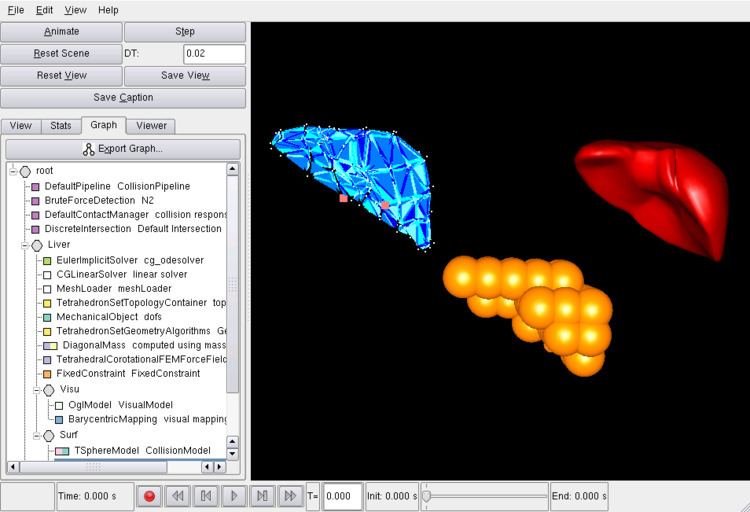Development status Active | ||
 | ||
Developer(s) Inria, CNRS, USTL, UJF, MGH Initial release February 2007; 10 years ago (2007-02) Stable release 16.08 / August 2016; 7 months ago (2016-08) Operating system | ||
Simulation Open Framework Architecture (SOFA) is an open source framework primarily targeted at real-time physical simulation, with an emphasis on medical simulation.
It is mostly intended for the research community to help develop newer algorithms, but can also be used as an efficient prototyping tool or as a physics engine.
Contents
History
The idea of creating an open-source platform for physics-based simulation first arose in the rooms of the CIMIT in Boston in 2000. It took about four years before a white paper describing the concept of the architecture of SOFA was written in 2004. For the first time, this white paper foreseen a collaborative project between the CIMIT and Inria (Alcove team in Lille). Soon, further Inria teams joined the project in Sophia-Antipolis and Grenoble. Early in 2005, the first live demonstration of SOFA was performed at the occasion of MMVR in Los Angeles. Subsequently, the American Department of Defense decided to fund the development of SOFA while Inria actively supported the project with the first SOFA engineers.
The SOFA project really started in 2006 in Boston.
Then, the implementation of the SOFA framework intensively started with new engineers, the first PhD students working on SOFA (CSIRO, Inria). In 2007, a publication describing in details the structure and the concepts of SOFA was accepted at MMVR. Since then, many engineers and PhD students contributed and experienced SOFA. Many of them are still in the community!
Today, SOFA gathers more than 10 years of research in physics simulation. Many publications were accepted, several simulators were developed and five startups were created.
The research topics were diverse:
Features
Based on an advanced software architecture, SOFA allows to:
Scene graph
A key aspect of SOFA is the use of a scene graph to organize and process the elements of a simulation while clearly separating the computation tasks from their possibly parallel scheduling. The description of a SOFA simulation can easily be done in an XML file. For even more flexibility, a Python plugin allows to script simulations using the Python language.
Basically, a SOFA scene-graph is composed with:
Solvers & Models
The SOFA engine provides many solvers and physical models:
Topologies
All types of topology are available in SOFA (points, edges, triangles, quads, tetrahedra, hexahedra). Loaders implemented in the public version of SOFA allow to load various type of formats (obj, msh, vtk, etc.). Using these loaders, your mesh is directly uploaded in the simulation. Finally, SOFA proposes algorithms handling topological changes.
Collisions
Different methods are implemented in SOFA to build a simulation involving collisions:
Mappings
The SOFA architecture relies on a multi-model representation which allows to have several representations (e.g. mechanical, thermal and visual) of the same object. Those different representations are connected together through a mechanism called Mapping. With this features, it is also possible to have models of very different nature interacting together (e.g. rigid bodies, deformable objects and fluids).
Plugins
To extend its capacities and provide more features, SOFA is bundled with a lot of plugins:
SOFA Day
Organized each year, the SOFA Day is a one day event dedicated to SOFA. This event is open to everyone interested in SOFA, from beginner to advanced users. It contains an introduction to SOFA, several tutorials (adapted to the audience) and a large time to experience SOFA with the help of the instructors.
SOFA Consortium
Exactly ten years after the first commit in SOFA, Inria founded the SOFA Consortium in December 2015.
The Consortium missions are to:
